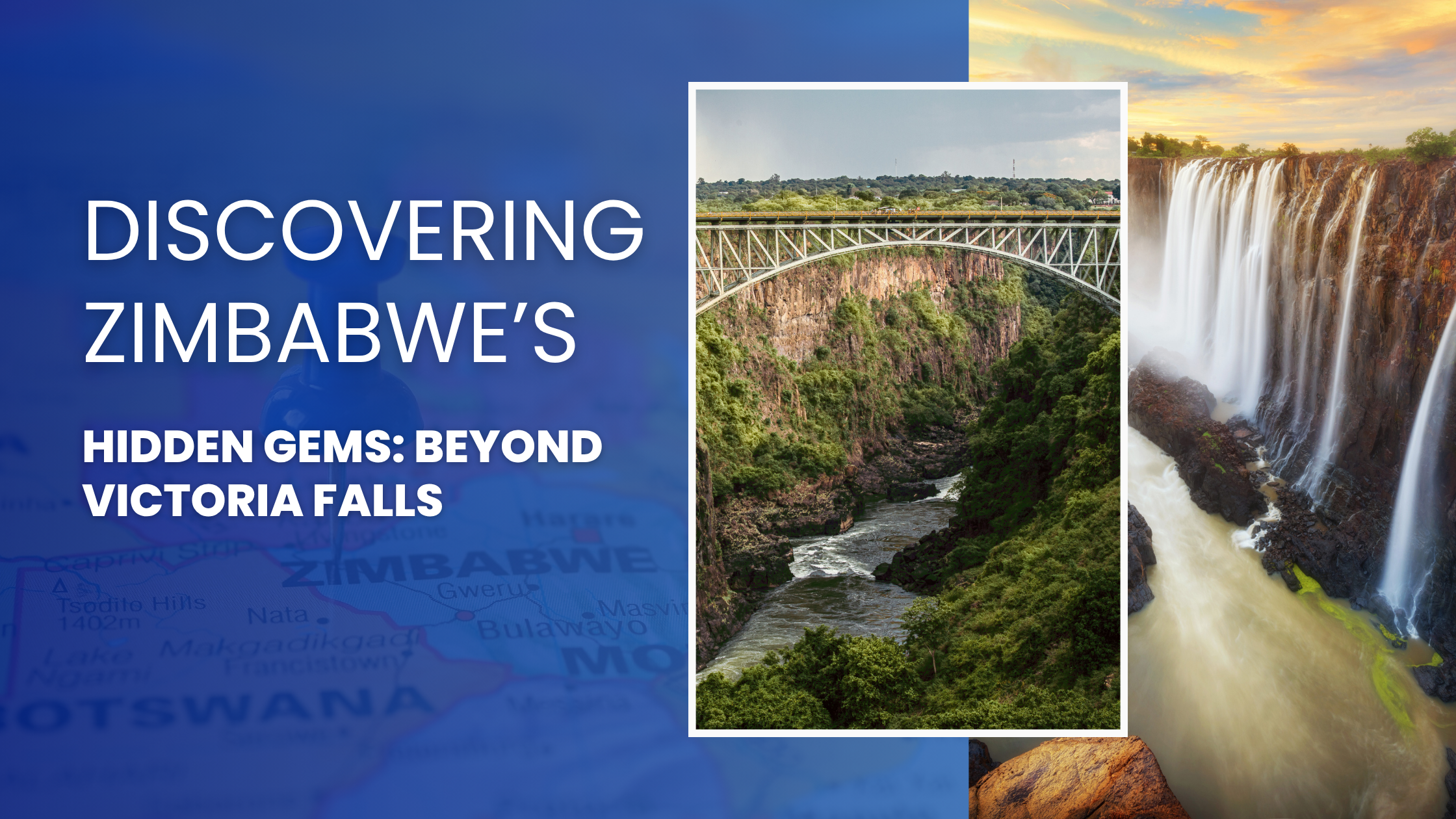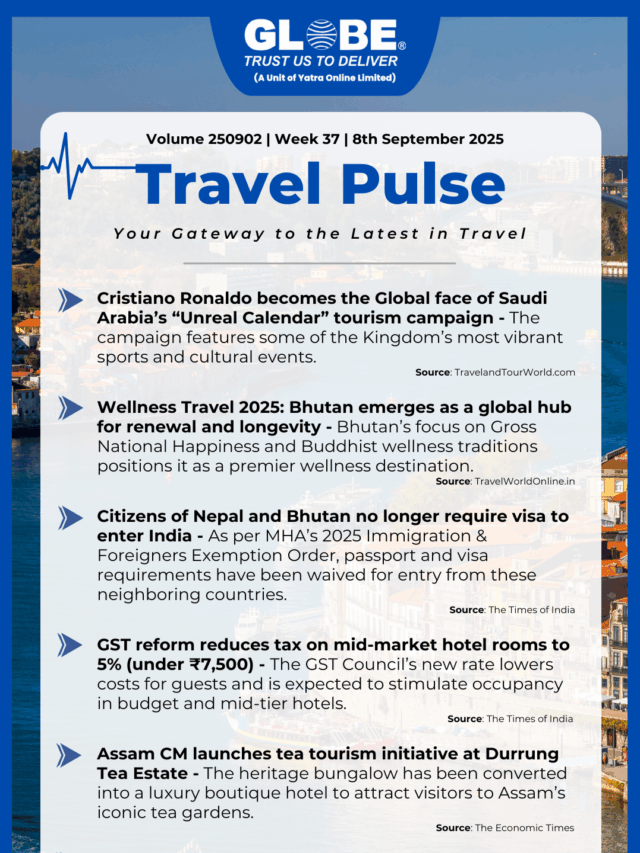Introduction
When most travelers think of Zimbabwe, one iconic landmark comes to mind: Victoria Falls—one of the Seven Natural Wonders of the World. Known locally as Mosi-oa-Tunya (“The Smoke That Thunders”), the waterfall attracts thousands of visitors every year. But here’s the truth: Zimbabwe is so much more than just Victoria Falls.
From mystical granite formations and ancient ruins to vast national parks teeming with wildlife, Zimbabwe is a land of hidden treasures waiting to be discovered. If you’re a traveler who loves exploring beyond the mainstream, this guide will take you deep into Zimbabwe’s lesser-known destinations.
Matobo Hills: A Landscape of Myths and Magic
Located near Bulawayo, Matobo Hills is a UNESCO World Heritage Site famous for its dramatic granite outcrops and spiritual significance.
- Cultural Importance: The area is considered sacred by the Shona and Ndebele people. It is believed to be a dwelling place of spirits and an important site for rainmaking ceremonies.
- Rock Art: Ancient San (Bushmen) paintings, some over 13,000 years old, can be found in caves here, offering a glimpse into early human history.
- Wildlife: The Matobo National Park is home to rhinos, leopards, and one of the highest concentrations of black eagles in the world.
Matobo Hills is not just a natural wonder—it’s a place where myth, culture, and wildlife coexist.
Great Zimbabwe Ruins: Echoes of an Ancient Civilization
Few people realize that Zimbabwe gets its very name from this archaeological treasure: the Great Zimbabwe Ruins.
- History: Built between the 11th and 15th centuries, this was the capital of the powerful Kingdom of Zimbabwe, which controlled trade routes across Southern Africa.
- Architecture: The stone walls, built without mortar, are a marvel of engineering and stand as a symbol of African heritage.
- Highlights: The Great Enclosure, the Hill Complex, and the Conical Tower are must-sees.
Visiting Great Zimbabwe is like stepping back in time, offering a rare chance to witness Africa’s pre-colonial grandeur.
Lake Kariba: Africa’s Inland Sea
Stretching 220 kilometers long, Lake Kariba is one of the largest man-made lakes in the world. Created after the construction of the Kariba Dam in the 1950s, it has become a hub for both wildlife and leisure.
- Wildlife Viewing: Expect to see hippos, crocodiles, elephants, and diverse bird species along the shores.
- Houseboat Safaris: One of the best ways to experience Lake Kariba is by taking a houseboat safari, where you can cruise, fish, and relax while surrounded by nature.
- Fishing: The lake is famous for its tiger fish, attracting anglers from around the world.
Lake Kariba is the perfect mix of adventure and relaxation—ideal for travelers who love water-based experiences.
Gonarezhou National Park: The “Place of Elephants”
Often overshadowed by Hwange National Park, Gonarezhou is a true hidden gem in southeastern Zimbabwe.
- Wildlife: Known for its large elephant population, the park also hosts lions, wild dogs, buffalo, and over 400 bird species.
- Chilojo Cliffs: These striking red sandstone cliffs are the park’s iconic landmark, especially stunning at sunset.
- Off-the-Beaten-Path: Because it’s less crowded, Gonarezhou offers a more authentic, wild safari experience compared to other parks.
If you want to feel like a true explorer, Gonarezhou is the place to go.
Chimanimani Mountains: A Hiker’s Paradise
For adventurers and nature lovers, the Chimanimani Mountains on the border with Mozambique are a must.
- Hiking: Trails lead through rugged peaks, lush forests, and sparkling waterfalls.
- Biodiversity: The region is home to unique plant species found nowhere else in the world.
- Culture: Local villages showcase traditional Zimbabwean lifestyles, adding a cultural dimension to your hike.
Chimanimani is perfect for travelers who want to combine physical adventure with cultural immersion.
Hwange National Park: Beyond the Big Five
Although Hwange is relatively well-known, many travelers overlook its true scale and beauty.
- Size: At 14,600 square kilometers, it’s the largest national park in Zimbabwe.
- Wildlife: Home to one of the world’s largest elephant populations, along with lions, cheetahs, giraffes, and over 400 bird species.
- Unique Feature: The park has man-made watering holes that sustain wildlife during dry seasons, making game viewing exceptional.
Hwange may not be “hidden,” but it remains under-visited compared to Kenya or Tanzania’s safari parks, making it a quieter gem.
Khami Ruins: Zimbabwe’s Lesser-Known Heritage Site
While Great Zimbabwe gets the spotlight, the Khami Ruins near Bulawayo are equally fascinating.
- History: They were once the capital of the Torwa Dynasty after the fall of Great Zimbabwe in the 15th century.
- Architecture: Unique terraced stone walls decorated with patterns set Khami apart from other ruins.
- UNESCO Status: Recognized as a World Heritage Site, yet often overlooked by tourists.
For history buffs, Khami is an incredible addition to Zimbabwe’s archaeological circuit.
Eastern Highlands: Zimbabwe’s Garden of Eden
Stretching along the border with Mozambique, the Eastern Highlands offer a completely different experience from the savannas.
- Nyanga National Park: Known for Mount Nyangani (Zimbabwe’s highest peak) and Mutarazi Falls, the country’s tallest waterfall.
- Cool Climate: The highlands provide a refreshing escape with misty forests and rolling hills.
- Tea & Coffee Estates: The region is dotted with plantations, adding charm to the landscape.
The Eastern Highlands are perfect for travelers seeking scenic beauty, cooler weather, and outdoor activities.
Matusadona National Park: Wilderness by the Lake
Situated on the shores of Lake Kariba, Matusadona National Park combines aquatic and land safari experiences.
- Wildlife: Lions, elephants, buffalo, and abundant hippos and crocodiles.
- Remote Experience: Its remoteness makes it less visited, ideal for those craving solitude in nature.
- Activities: Walking safaris and boat rides provide diverse ways to explore the park.
Matusadona is where you’ll find tranquility and raw wilderness side by side.
Why Zimbabwe’s Hidden Gems Deserve Attention
Zimbabwe’s tourism often gets overshadowed by neighboring countries like South Africa, Botswana, and Zambia. Yet, those who venture here are rewarded with:
- Authenticity: Fewer crowds mean more intimate experiences.
- Cultural Depth: Ancient ruins, local traditions, and indigenous knowledge enrich every trip.
- Diversity: From waterfalls and mountains to savannas and lakes, Zimbabwe offers it all.
Zimbabwe is not just a single destination—it’s a mosaic of experiences waiting to be discovered.
Travel Tips for Exploring Zimbabwe’s Hidden Gems
- Best Time to Visit: May to October (dry season) is ideal for safaris and outdoor activities.
- Transport: Domestic flights are limited, so prepare for road travel or guided tours.
- Local Culture: Learn a few Shona or Ndebele greetings—it goes a long way in connecting with locals.
- Safety: Zimbabwe is generally safe for tourists, but always check local travel advisories.
- Sustainability: Support community-led tourism projects that help preserve culture and nature.
Conclusion
While Victoria Falls may be Zimbabwe’s most famous attraction, the country’s soul lies in its hidden gems. From the ancient walls of Great Zimbabwe to the tranquil waters of Lake Kariba and the wild beauty of Gonarezhou, Zimbabwe is a destination that rewards curiosity.
If you’re a traveler seeking something authentic, adventurous, and deeply cultural, Zimbabwe’s off-the-beaten-path wonders are waiting for you.
So next time you think of Zimbabwe, look beyond the smoke that thunders—and discover the treasures that lie hidden in the heart of Southern Africa.





